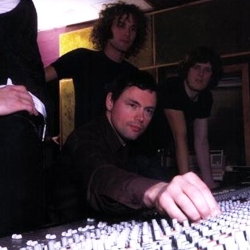The overdubbing stage can be something as simple as fixing or replacing some of the basic tracks (like the bass, rhythm guitar, solos, and lead vocal) or as complex as adding sophisticated layering of horns and strings, multiple guitars, keyboards, and background vocals.
It’s also the phase of the project during which the most experimenting is done, since even the most meticulously designed parts sometimes don’t work and require some alteration.
The Recording Plan
When budgets get blown out the window and the project begins to fall behind schedule, the overdubbing stage is usually responsible.
If a producer is doing his job correctly, each overdub is finely crafted to complement every other musical part of the song.
This crafting takes a lot of work, since the overdub has to have the right sound and the part has to musically fit like a glove with all the others.
That’s why it’s best to have a list of priorities of which overdubs are the most important and absolutely must be recorded; that way, you can make sure not to fall behind due to experimentation and extra ideas.
The overdub priority list should go song by song and might look something like the following:
- “Sunshine of Your Life”
• Lead vocal
• Lead vocal harmony (2nd and 3rd B section)
• Guitar solo
• Keyboard, fix 2nd verse
• Keyboard line, 2nd and 3rd verse
• Background vocals (choruses)
• Background vocals (last verse)
• Guitar double (chorus and bridge)
You can see just what overdubs are expected on the song and how they rank in terms of priority, with the last entry (guitar double) being the least important.
Having a list like this will help you plan your overdubs and let you know just what you can eliminate if you start to get behind budget-wise or time-wise.
Make It Better, Not Just Different
Most artists share the common trait of having a creative streak that provides them idea after idea for parts, lines, embellishments, and enhancements. The more creative the artist, the more the ideas spring forth, and that’s the problem.
Sometimes an artist has so many good ideas that it takes a lot of time to try them all, and before you know it, you’re behind schedule. That’s bad enough, but an abundance of ideas can move a song away from its true intention, even detracting from the original inspiration.
An example would be an artist who writes a straight pop song, but then just has to hear how it sounds with a reggae feel. While the song might be great with the new style, it might not contain the essence of the artist’s original inspiration.
It’s up to you as producer to put a hold on the experimentation and focus the energy back to where the artist shines best.
Sometimes an artist will come up with good idea after good idea for new lines and parts during overdubs, and while most of them might work, they just make the song different and not better.
Again, it’s up to you to focus the energy of the artist and musicians back to where it needs to be and make the decision that the original direction is the best one to follow.
Sometimes an artist’s massive creativity can work in your favor, though. For example, if you’re not sure about the original feel of the song, expressing that to the artist will get his creative juices flowing and before you know it, a better idea will appear.
But usually the artist’s first inspiration is the best, and it’s probably the one that attracted you to him in the first place.





















